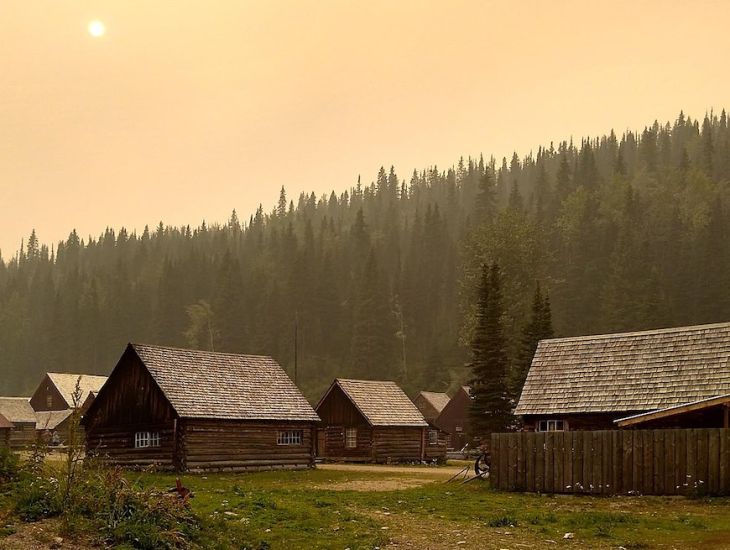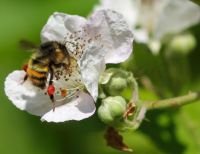Preparing for wildfires: UBC experts share their tips
Q&As
Around 1,600 wildfires burn in British Columbia every year. While many wildfires are a natural and important part of B.C.’s landscapes, climate change is driving hotter and drier conditions that can make wildfires more threatening. As these fires grow larger and more frequent—beginning earlier in the spring and extending well into the fall—UBC experts emphasize the importance of adapting to the new reality.
Drs. Kelsey Copes-Gerbitz (KCG) and Sarah Dickson-Hoyle (SDH), faculty of forestry wildfire researchers, share valuable insights in this Q&A. They suggest practical measures for individuals and communities to protect their homes and surroundings from the B.C. wildfire risk, while calling for broader-scale solutions.
What do we need to know about B.C.’s wildfire risk?
KCG: Wildfires in B.C. are becoming more severe and larger in size, and this trend is expected to continue. Extreme fire weather events, such as the heat dome in 2021, can exceed our abilities to suppress fire. Post-wildfire landscapes are also more susceptible to flooding, especially during events like an atmospheric river, which is why 2021 was such a challenging season.
SDH: These larger fires are increasingly impacting the values that we care about. We should be planning our cities and our towns with wildfire risk in mind—for example, by having stronger planning requirements in the wildland-urban interface and considering wildfire risk in building materials and urban planning.
How do we protect our homes and communities in this changing environment?
SDH: A good place to start is B.C.’s FireSmart manual or FireSmart Canada’s Celebrating Indigenous Fire Stewardship guide. They suggest simple and cost-effective measures for reducing wildfire risk. Avoid highly flammable plants such as juniper or cedar and opt instead for low-density, fire-resistant plants in your garden. Keep flammable materials like gas canisters or firewood away from your home. Maintain low grass and clear your gutters. Have an evacuation plan in place and find out if your community or local government has a FireSmart coordinator who can support FireSmart activities locally.
KCG: On landscapes more broadly, we should consider the risk associated with new infrastructure and outdoor access, particularly in the backcountry. Responsible recreation helps us avoid setting accidental fires. If you work in a landscape-based industry, such as forestry, what protocols do you have in place to prevent wildfires, how are you reducing wildfire risk, and could you adjust some of your practices?
How else can people contribute to solutions?
SDH: We all have a responsibility to urge politicians to address climate change and advance climate action. This can be achieved by not investing in fossil fuel initiatives and upholding government commitments to the Paris Agreement. This scale of action can have the most impact.
What improvements or gaps have you seen in wildfire management?
KCG: Since 2017, there’s been a huge, concerted effort by communities, governments and agencies to work on more proactive solutions even before the wildfire season begins.
Communities have been driving this change, drawing on local knowledge and expertise. Agencies have shifted towards supporting more proactive management, including increased staffing for activities like fuel treatments that help reduce wildfire risk. Government funding has also been increased. However, because there are so many groups working in this space, efforts can feel somewhat disjointed. The focus has now shifted towards how we can work better collaboratively.
SDH: There is a growing shift towards shared decision-making and shared governance with different First Nations and local communities around B.C. Shared responsibility doesn’t mean devolving responsibility onto the community. It requires understanding the different responsibilities of government agencies, local communities and individuals. Supporting all these roles and responsibilities at different scales will be critical.
Final thoughts on managing wildfires?
KCG: Addressing wildfire risk is everyone’s responsibility. We need to be proactive not just in and around our communities, but across broader landscapes in B.C.
SDH: It’s also important to acknowledge the political aspects of climate change when discussing wildfire risk, in particular the continued expansion and approval of fossil fuel projects. These extractive industries, along with wildfire and climate change, disproportionately impact certain communities, in particular Indigenous communities. Supporting shared decision-making and governance is necessary for effective wildfire management.














